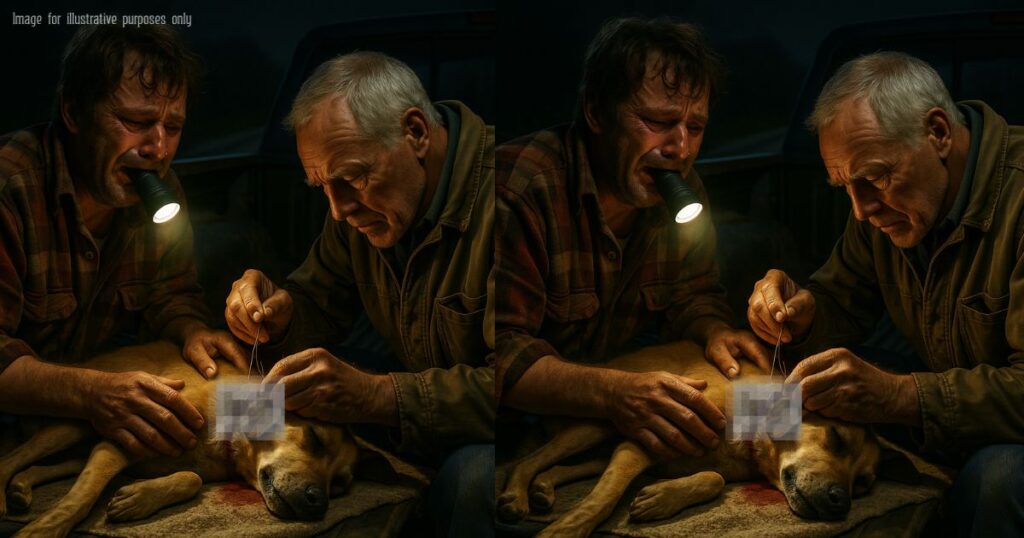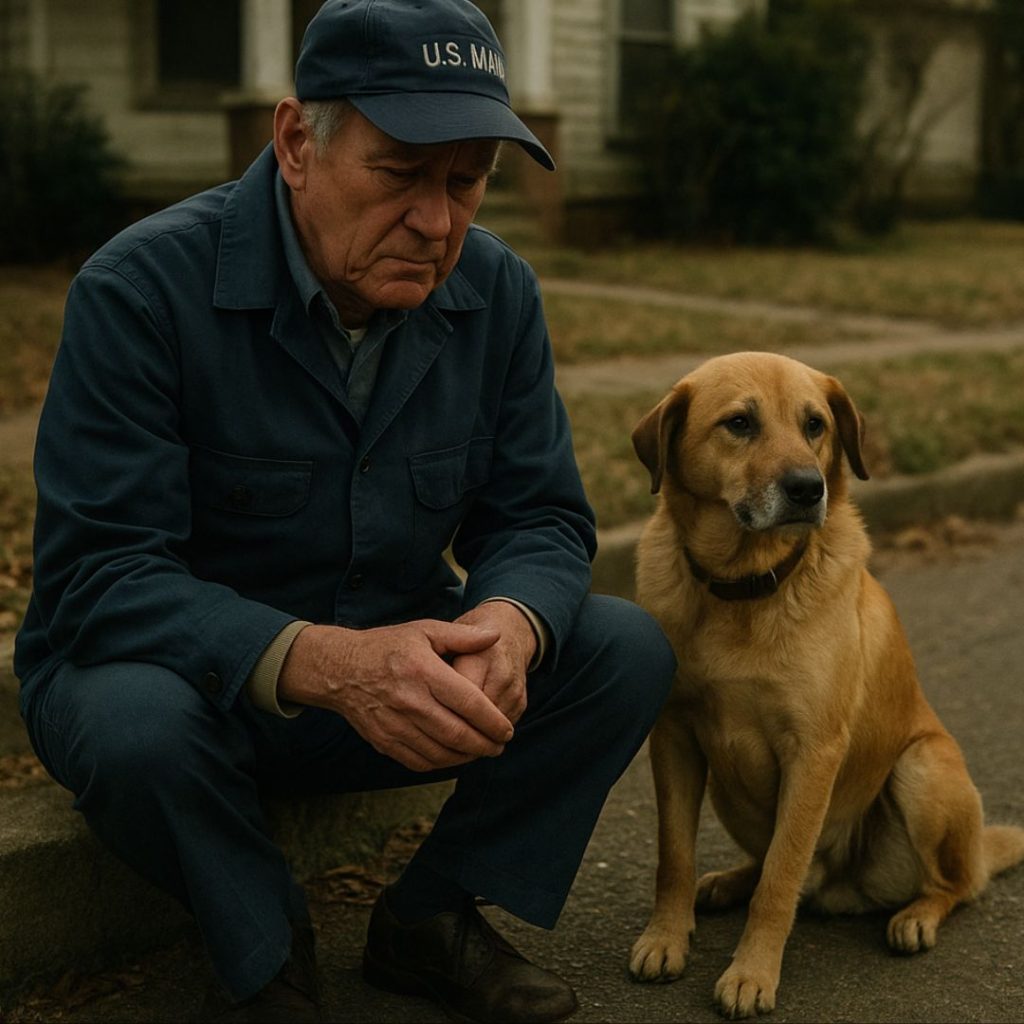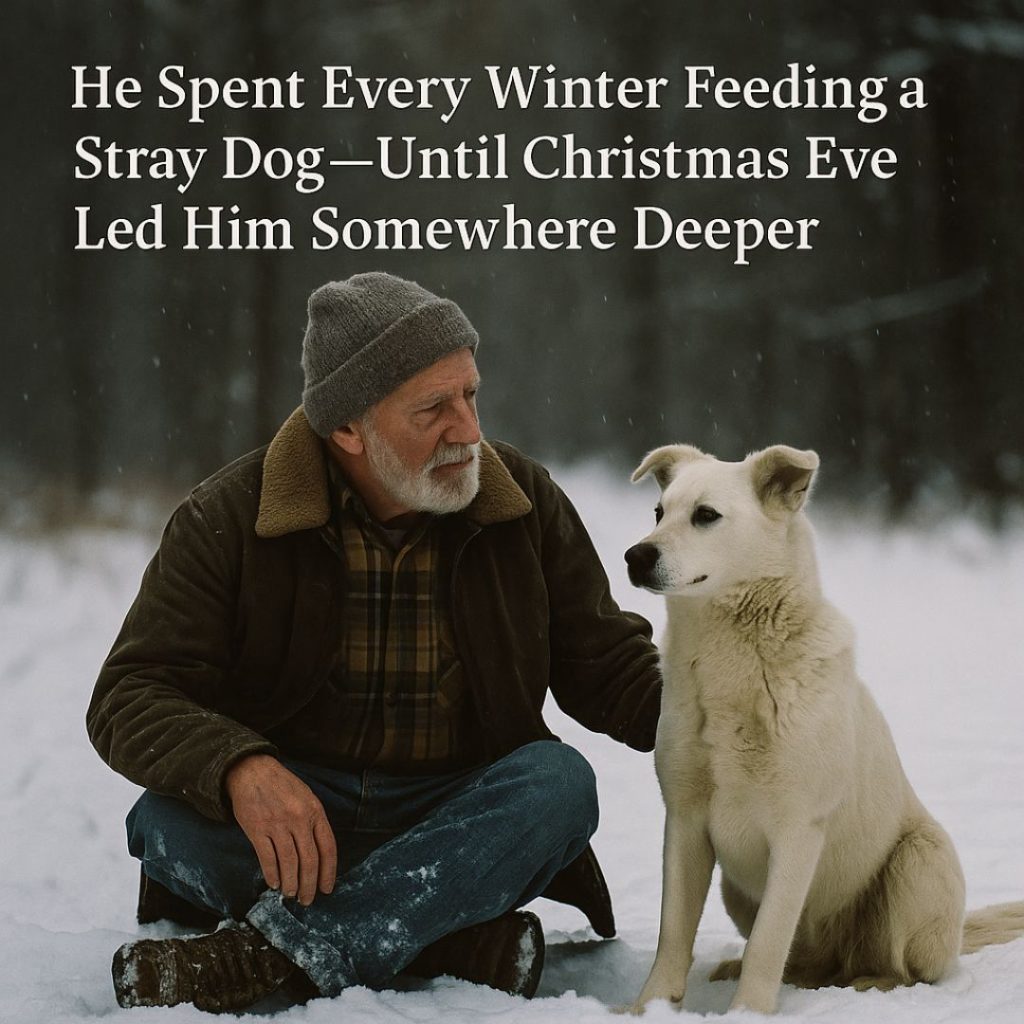Part 1 Back Then, We Held Them as They Left
I once stitched up a dog’s throat with fishing line in the back of a pickup, while its owner held a flashlight in his mouth and cried like a child.
That was in ’79, maybe ’80. Just outside a little town near the Tennessee border. No clinic, no clean table, no anesthetic except moonshine. But the dog lived, and that man still sends me a Christmas card every year, even though the dog’s long gone and so is his wife.
I’ve been a vet for forty years. That’s four decades of blood under my nails and fur on my clothes. It used to be you fixed what you could with what you had — not what you could bill. Now I spend half my days explaining insurance codes and financing plans while someone’s beagle bleeds out in the next room.
I used to think this job was about saving lives. Now I know it’s about holding on to the pieces when they fall apart.
I started in ’85. Fresh out of the University of Georgia, still had hair, still had hope. My first clinic was a brick building off a gravel road with a roof that leaked when it rained. The phone was rotary, the fridge rattled, and the heater worked only when it damn well pleased. But folks came. Farmers, factory workers, retirees, even the occasional trucker with a pit bull riding shotgun.
They didn’t ask for much.
A shot here. A stitch there. Euthanasia when it was time — and we always knew when it was time. There was no debate, no guilt-shaming on social media, no “alternative protocols.” Just the quiet understanding between a person and their dog that the suffering had become too much. And they trusted me to carry the weight.
Some days I’d drive out in my old Chevy to a barn where a horse lay with a broken leg, or to a porch where an old hound hadn’t eaten in three days. I’d sit beside the owner, pass them the tissue, and wait. I never rushed it. Because back then, we held them as they left. Now people sign papers and ask if they can just “pick up the ashes next week.”
I remember the first time I had to put down a dog. A German shepherd named Rex. He’d been hit by a combine. The farmer, Walter Jennings, was a World War II vet, tough as barbed wire and twice as sharp. But when I told him Rex was beyond saving, his knees buckled. Right there in my exam room.
He didn’t say a word. Just nodded. And then — I’ll never forget this — he kissed Rex’s snout and whispered, “You done good, boy.” Then he turned to me and said, “Do it quick. Don’t make him wait.”
I did.
Later that night, I couldn’t sleep. I sat on my front porch with a cigarette and stared at the stars until the sunrise. That’s when I realized this job wasn’t just about animals. It was about people. About the love they poured into something that would never live as long as they did.
Now it’s 2025. My hair’s white — what’s left of it. My hands don’t always cooperate. There’s a tremor that wasn’t there last spring. The clinic is still there, but now it’s got sleek white walls, subscription software, and some 28-year-old marketing guy telling me to film TikToks with my patients. I told him I’d rather neuter myself.
We used to use instinct. Now it’s all algorithms and liability forms.
A woman came in last week with a bulldog in respiratory failure. I said we’d need to intubate and keep him overnight. She pulled out her phone and asked if she could get a second opinion from an influencer she follows online. I just nodded. What else can you do?
Sometimes I think about retiring. Hell, I almost did during COVID. That was a nightmare — parking lot pickups, barking from behind closed doors, masks hiding the tears. Saying goodbye through car windows. No one got to hold them as they left.
That broke something in me.
But then I see a kid come in with a box full of kittens he found in his grandpa’s barn, and his eyes light up when I let him feed one. Or I patch up a golden retriever who got too close to a barbed fence, and the owner brings me a pecan pie the next day. Or an old man calls me just to say thank you — not for the treatment, but because I sat with him after his dog died and didn’t say a damn thing, just let the silence do the healing.
That’s why I stay.
Because despite all the changes — the apps, the forms, the lawsuits, the Google-diagnosing clients — one thing hasn’t changed.
People still love their animals like family.
And when that love is deep enough, it comes out in quiet ways. A trembling hand on a fur-covered flank. A whispered goodbye. A wallet emptied without question. A grown man breaking down in my office because his dog won’t live to see the fall.
No matter the year, the tech, the trends — that never changes.
A few months ago, a man walked in carrying a shoebox. Said he found a kitten near the railroad tracks. Mangled leg, fleas, ribs like piano keys. He looked like hell himself. Told me he’d just gotten out of prison, didn’t have a dime, but could I do anything?
I looked in that box. That kitten opened its eyes and meowed like it knew me. I nodded and said, “Leave him here. Come back Friday.”
We splinted the leg, fed him warm milk every two hours, named him Boomer. That man showed up Friday with a half-eaten apple pie and tears in his eyes. Said no one ever gave him something back without asking what he had first.
I told him animals don’t care what you did. Just how you hold them now.
Forty years.
Thousands of lives.
Some saved. Some not.
But all of them mattered.
I keep a drawer in my desk. Locked. No one touches it. Inside are old photos, thank-you notes, collars, and nametags. A milk bone from a border collie named Scout who saved a boy from drowning. A clay paw print from a cat that used to sleep on a gas station counter. A crayon drawing from a girl who said I was her hero because I helped her hamster breathe again.
I take it out sometimes, late at night, when the clinic’s dark and my hands are still.
And I remember.
I remember what it was like before all the screens. Before the apps. Before the clickbait cures and the credit checks.
Back when being a vet meant driving through mud at midnight because a cow was calving wrong and you were the only one they trusted.
Back when we stitched with fishing line and hope.
Back when we held them as they left — and we held their people, too.
If there’s one thing I’ve learned in this life, it’s this:
You don’t get to save them all.
But you damn sure better try.
And when it’s time to say goodbye, you stay. You don’t flinch. You don’t rush. You kneel down, look them in the eyes, and you stay until their last breath leaves the room.
That’s the part no one trains you for. Not in vet school. Not in textbooks.
That’s the part that makes you human.
And I wouldn’t trade it for the world.


